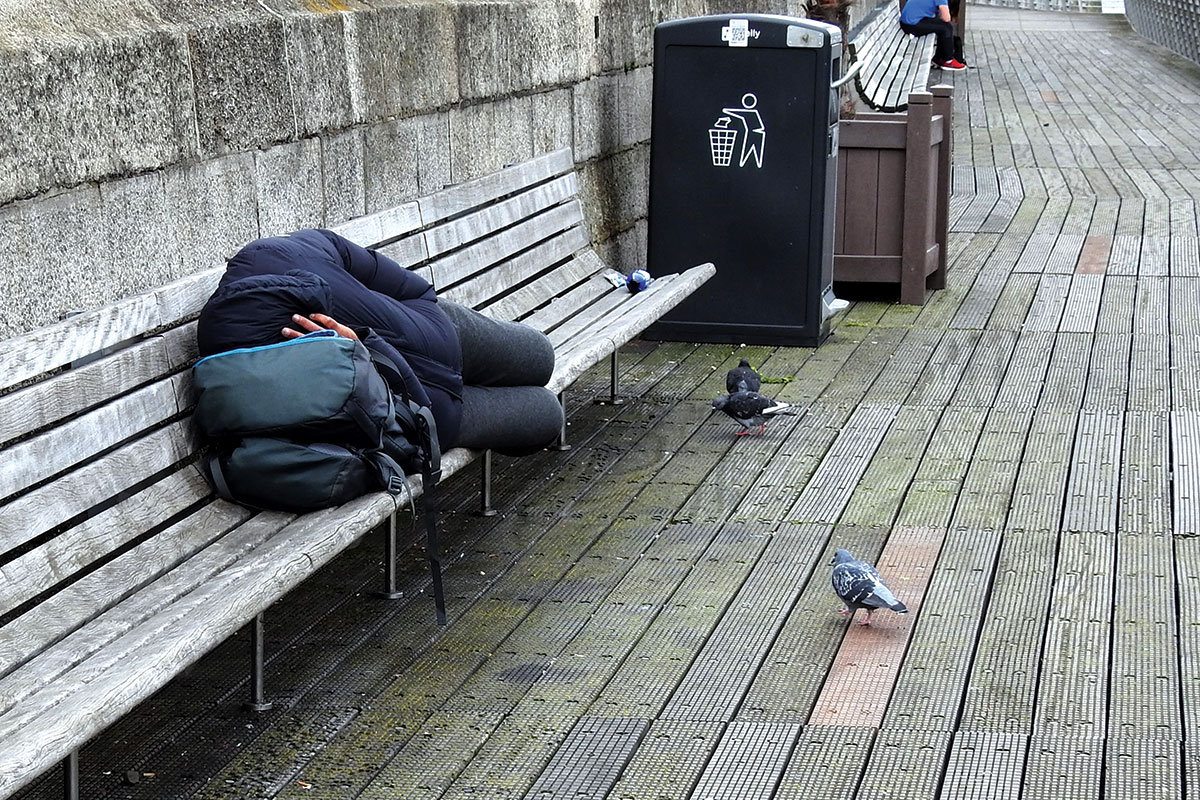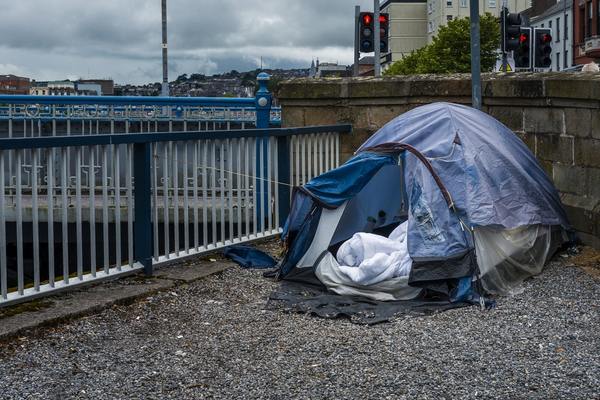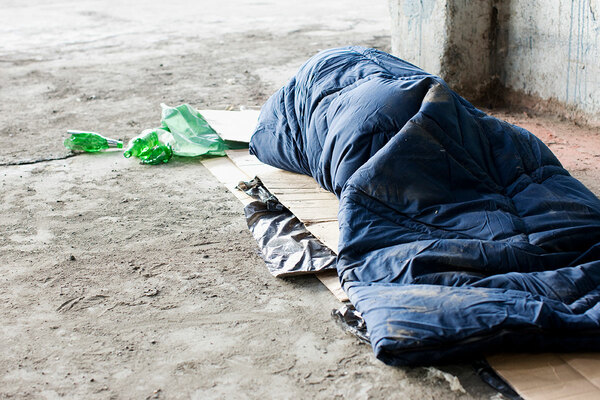You are viewing 1 of your 1 free articles

Six steps that could help us transform the way we tackle homelessness
There is a danger the response to the COVID-19 pandemic will ultimately amount to little more than rearranging the deckchairs on the Titanic when it comes to homelessness, writes Dr Lígia Teixeira. Here she sets out six suggestions for overhauling the system to deliver lasting change
On April 14, 1912 —108 years ago last week— the RMS Titanic sank, and 1,500 lives were lost. As with the coronavirus pandemic today, the story was headline news when it happened.
Since the fateful night when the ship hit the iceberg, it has left a remarkable cultural legacy. “Rearranging deck chairs on the Titanic” being probably the most famous metaphor connected to any major disaster, and one that provides a useful thought experiment in relation to homelessness.
Today we sense that the coronavirus pandemic will transform the economy beyond all recognition and hit the poorest in society hardest, potentially pushing greater numbers of people than ever before into homelessness. The outbreak came at a time when governments and cities across the UK had committed to plans to end homelessness. History had already told us this was never going to be easy, but the task is about to get a lot harder.
In a field like homelessness, filled with age old habits and passions, but with a lack of clear, rigorous evidence, what can be done to steer clear of disaster?
In fact, what can be done to turn the crisis into an opportunity to transform the homelessness system and ensure we’re not just “rearranging the deck chairs”?
The story of the Titanic offers several concrete suggestions.
1 Question assumptions and cultivate imagination
The Titanic’s owners and her captain assumed that it could never sink. Their overconfidence led to poor decisions — such as removing an entire row of lifeboats just before she sailed for purely cosmetic reasons.
The ability to question assumptions may well be one of the most important habits to cultivate in homelessness today.
We should be asking ourselves, “Should the aim be to return to business as usual post-crisis, including helping people housed in hotels during the pandemic return to shelter-style accommodation? Or may this be a unique opportunity to try something better?”
Humility, asking the right questions, and using data and evidence to test prevailing assumptions is vital at a time like this.
We also need to be more creative.
For instance, the default way to address homelessness is still by providing emergency housing and services, even though evidence suggests that this is costly and ineffective.
It does not address the root cause of homelessness and people can become institutionalised and exposed to trauma or victimisation in the process.
You’d think we would have found alternatives by now. We haven’t, because we find it hard to believe that the systems we’ve created may be part of the problem or that anything better is even possible. We’ve lacked imagination, but there is nothing inevitable about this — we cannot change the past but we can change the future.
2 Go slow to go fast
The Titanic was travelling too quickly — 22 knots in an ice field. Had she been slower, she may well have missed the iceberg altogether.
In homelessness, we are often fixated on delivering solutions at pace. This is understandable given that lives can be at stake. But knowing when to slow down in order to go faster later may be just as important.
Are we making enough time to collect the data and evidence we need to make the right decisions? Are we stepping back often enough to understand what different subpopulations need? What do they want to accomplish? What are their goals? Are there ways to build the technology to handle their needs more effectively, while reducing evaluation costs?
3 Heed warnings and evidence
Ships nearby attempted to warn the Titanic, but the messages were ignored. Other signs were also missed such was the crew’s confidence that the journey would be a smooth one.
In the UK, a spike in homelessness levels seems likely within months unless major steps are taken.
Things have been moving in the right direction. But with the economy seemingly in free fall, it will be important for government and local areas across the UK to continue to act fast, with clarity, while also taking the long-term view.
We also need to use evidence and data to figure out what works for whom and what doesn’t, allowing us to reject the dangerous half-truths that often pass for wisdom. How else will we know whether we are doing the most good we can with the resources available?
4 Build better systems, as well as better lifeboats
To prevent homelessness at population level, requires complicated, system-wide solutions. We need to acknowledge that even our better services can never be more than lifeboats.
To create a better homelessness system you have to first understand how we came by the current one.
Since Victorian times, a homeless person could call upon the services of the Poor Law’s workhouse casual wards but also charities, such as the Salvation Army, which operated hostels, shelters and soup kitchens, as well as private entrepreneurs running lodging houses.
The modern homelessness system developed from there, more or less by accident.
By combining the intuitive and exploratory nature of person-centred design, with the leverage-minded and strategic nature of systems thinking, and improving the way data and evidence is generated to drive better outcomes, we can begin to shift the system.
Current evidence suggests that most homeless people need temporary low-support with resolving a recent housing loss and other significant life event, or with transitioning out of an institutional living environment.
They do not necessarily need an emergency housing stay. By reallocating resources towards prevention – including interventions that help mainstream services respond more effectively to people at risk – and more normalised housing environments, our approach to addressing homelessness will be more humane and effective.
We also know that to stop the flow of people into homelessness we need to address the larger housing affordability issues, and ensure welfare support and wages are adequate.
5 Communicate, communicate, communicate
Despite having state-of-the-art communication systems, the Titanic failed to effectively communicate with three nearby ships that actually could have rescued all of its passengers.
The government’s daily coronavirus updates have gone a long way towards setting out the official plan and the rationale behind the decisions being made.
Given the likely disproportionate impact on the homeless population it may be beneficial to double down on subject specific communications efforts at both national and local levels. In the absence of information, people will make it up.
Creating plenty of opportunities to let them talk and ask questions will make them feel better and help decision-makers gather and respond to feedback quickly.
6 Foster collective leadership
Lack of co-operation and collaboration resulted in greater loss of life when the Titanic sank.
While there seemed to be a ship relatively close by, the nearest ship responding to Titanic’s SOS distress signal was Carpathia, and she was more than four hours away.
We get so caught up in our daily work that we often forget to build powerful collaborative networks.
Yet collaboration and support across organisations and sectors is one of the best ways to help people experiencing homelessness both now and post crisis.
This will involve shifting focus from reactive responses to having more generative conversations about how we might co-create the future.
Building a new homelessness system is vital to achieve our ambitious goals, but it won’t be easy.
Tackling a tough complicated social issue like homelessness requires a willingness to question assumptions, discover new possibilities, and experiment to find out how to make the most good with existing resources.
But with collective leadership and a humble ‘what works’ mindset we can change course. In fact, the future of this particular ship depends on it.
Sign up for our daily newsletter
Already have an account? Click here to manage your newsletters
More on coronavirus
To see all our coronavirus coverage to date – including the latest news, advice to providers, comment and analysis – use the link below.
The government has called on local authorities to house all rough sleepers immediately (picture: Lucy Brown)
Even if councils are able to find hotel accommodation for everyone who is already homeless or becomes homeless, questions must be asked about whether this solution will prove sustainable.
Ms Maitland says the majority of councils are staffing hotels for rough sleepers with employees and volunteers from the homelessness sector, however providing essentials such as food and medical prescriptions is proving to be a big challenge. Concerns have also been raised around how individuals can keep themselves occupied, and how to support people who are at risk of experiencing alcohol withdrawal.
However, despite the challenges it seems like hotels are the best option councils and homelessness charities have.
“We’ve got a collision,” says Ms Neate. “It’s public health crisis meets housing crisis. The result is a lot of vulnerable people in an intolerable situation.
















